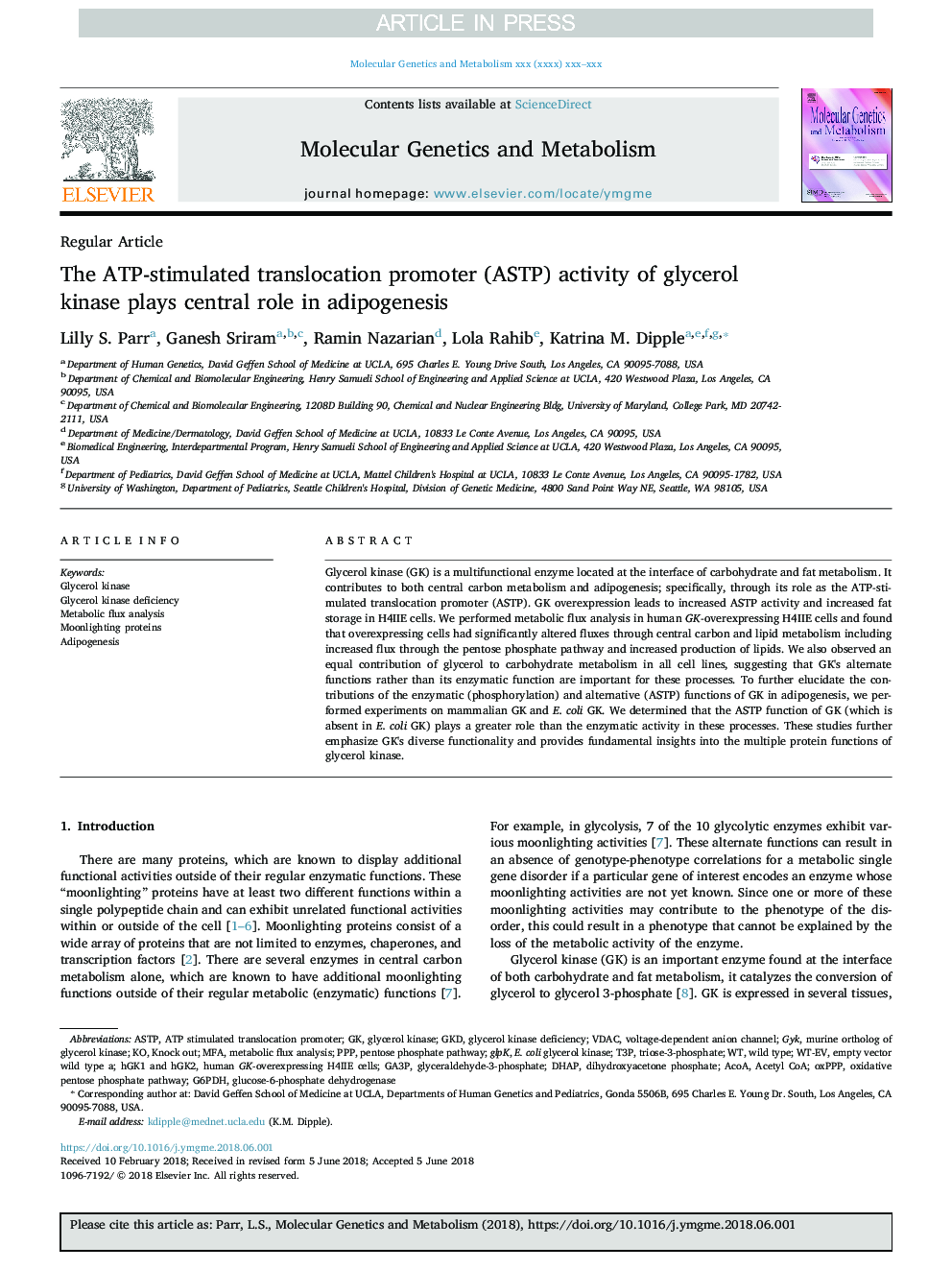| Article ID | Journal | Published Year | Pages | File Type |
|---|---|---|---|---|
| 8342896 | Molecular Genetics and Metabolism | 2018 | 12 Pages |
Abstract
Glycerol kinase (GK) is a multifunctional enzyme located at the interface of carbohydrate and fat metabolism. It contributes to both central carbon metabolism and adipogenesis; specifically, through its role as the ATP-stimulated translocation promoter (ASTP). GK overexpression leads to increased ASTP activity and increased fat storage in H4IIE cells. We performed metabolic flux analysis in human GK-overexpressing H4IIE cells and found that overexpressing cells had significantly altered fluxes through central carbon and lipid metabolism including increased flux through the pentose phosphate pathway and increased production of lipids. We also observed an equal contribution of glycerol to carbohydrate metabolism in all cell lines, suggesting that GK's alternate functions rather than its enzymatic function are important for these processes. To further elucidate the contributions of the enzymatic (phosphorylation) and alternative (ASTP) functions of GK in adipogenesis, we performed experiments on mammalian GK and E. coli GK. We determined that the ASTP function of GK (which is absent in E. coli GK) plays a greater role than the enzymatic activity in these processes. These studies further emphasize GK's diverse functionality and provides fundamental insights into the multiple protein functions of glycerol kinase.
Keywords
GA3PASTPPPPT3PDHAPGyKG6PDHVDACAdipogenesisAcetyl CoAAcoAMetabolic flux analysisdihydroxyacetone phosphatepentose phosphate pathwayOxidative pentose phosphate pathwayknock outwild typeMFAMoonlighting proteinsvoltage-dependent anion channelGlycerol kinase deficiencyglucose-6-phosphate dehydrogenaseglyceraldehyde-3-phosphate Glycerol kinase
Related Topics
Life Sciences
Biochemistry, Genetics and Molecular Biology
Biochemistry
Authors
Lilly S. Parr, Ganesh Sriram, Ramin Nazarian, Lola Rahib, Katrina M. Dipple,
